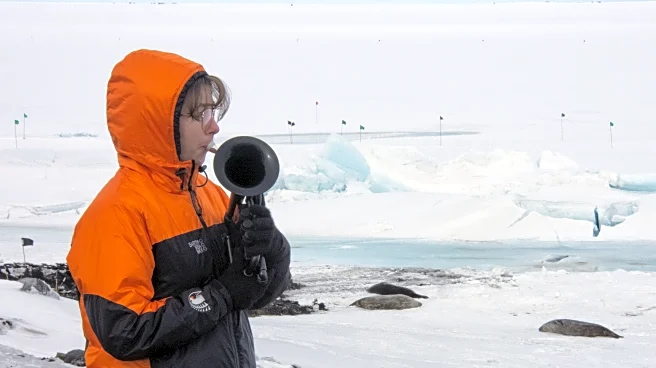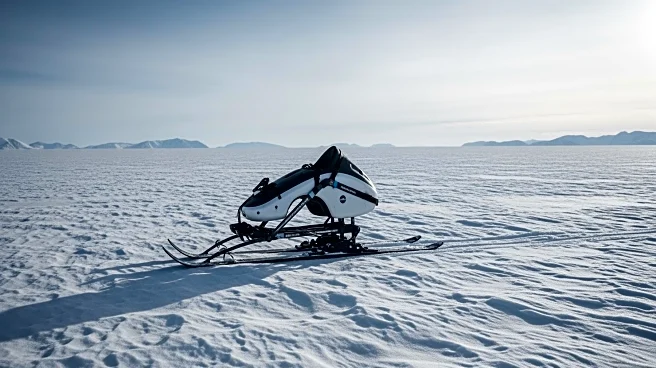What's Happening?
Natalie Paine, a French horn player in New Zealand's navy, is stationed in Antarctica, where she performs music in one of the most remote practice rooms on Earth. Despite the challenging environment, Paine uses
a plastic instrument designed for children to avoid freezing her fingers or face. Her presence in Antarctica supports scientific missions, and she has provided live music for ceremonies at Scott Base. Paine's journey to Antarctica was driven by her childhood dream and took four years of applications before she secured a position as a communications operator.
Why It's Important?
Paine's story highlights the intersection of art and science in extreme environments, demonstrating the adaptability and resilience required to pursue creative endeavors in challenging conditions. Her presence in Antarctica underscores the importance of cultural and artistic contributions to scientific missions, fostering a sense of community and connection among those stationed in remote locations. This narrative also emphasizes the role of the military in supporting scientific research, showcasing the diverse skills and backgrounds of personnel involved in these missions.
Beyond the Headlines
Paine's experience in Antarctica offers insights into the broader cultural and psychological impacts of isolation and extreme environments. Music serves as a universal language, providing comfort and connection in challenging circumstances. Her story also raises questions about the role of art in scientific exploration and the potential for creative expression to enhance the well-being of individuals in remote settings. As climate change continues to impact polar regions, the integration of cultural and scientific efforts may become increasingly important in addressing global challenges.












